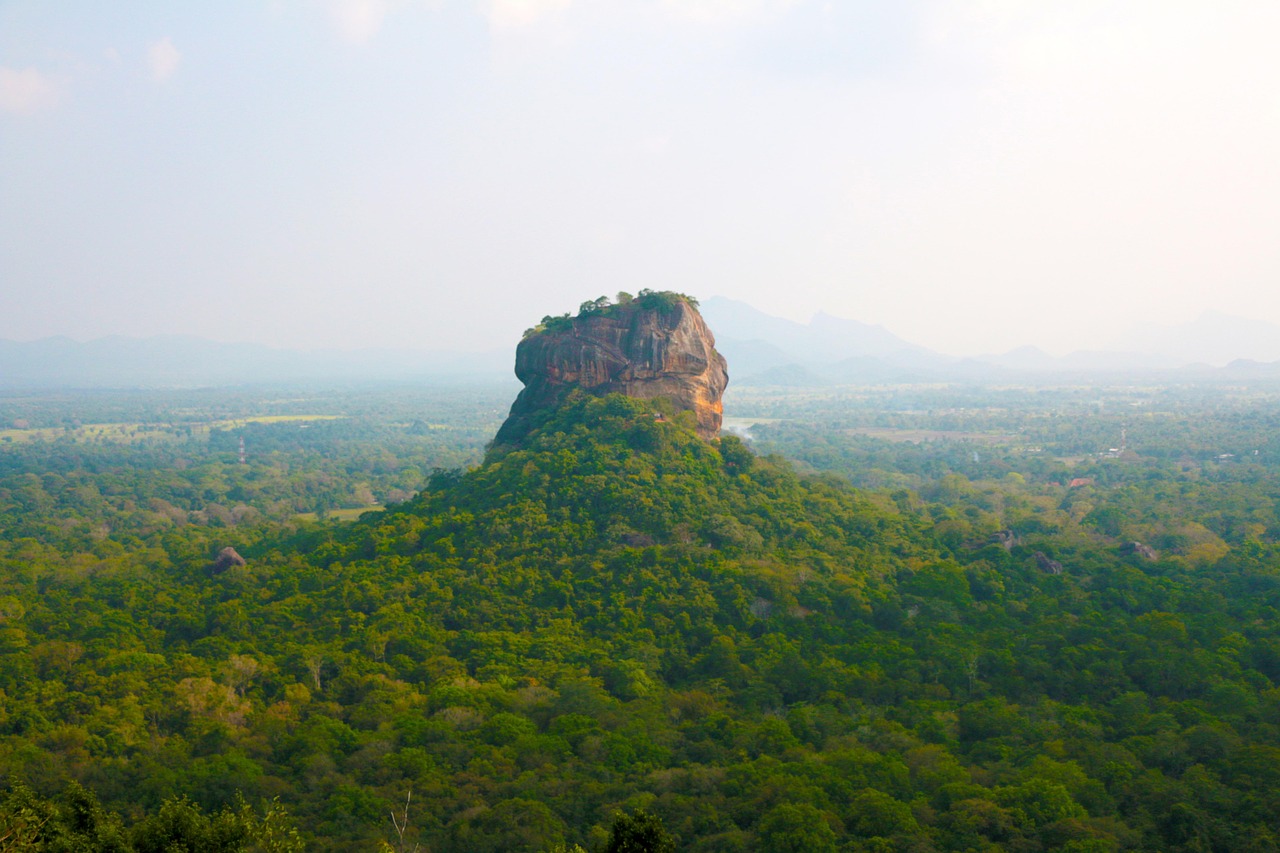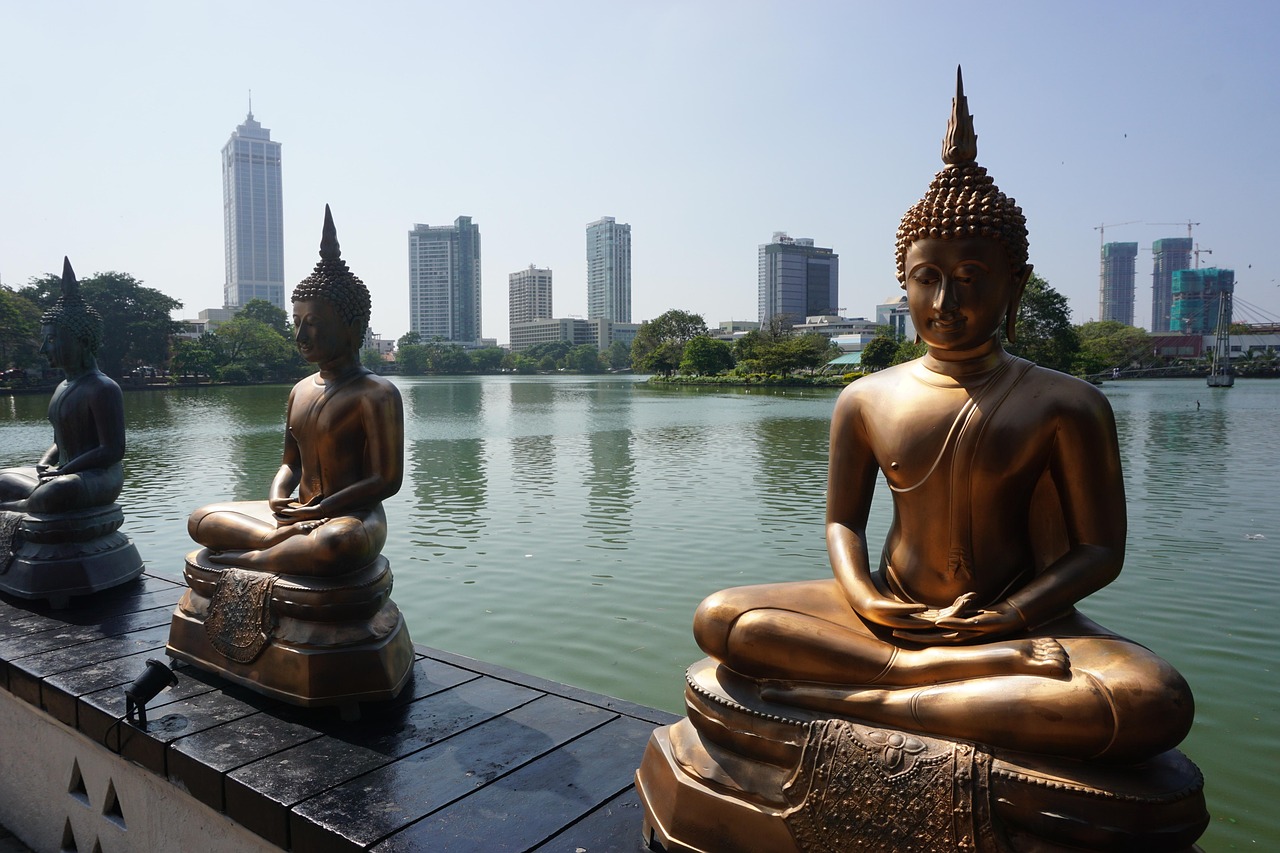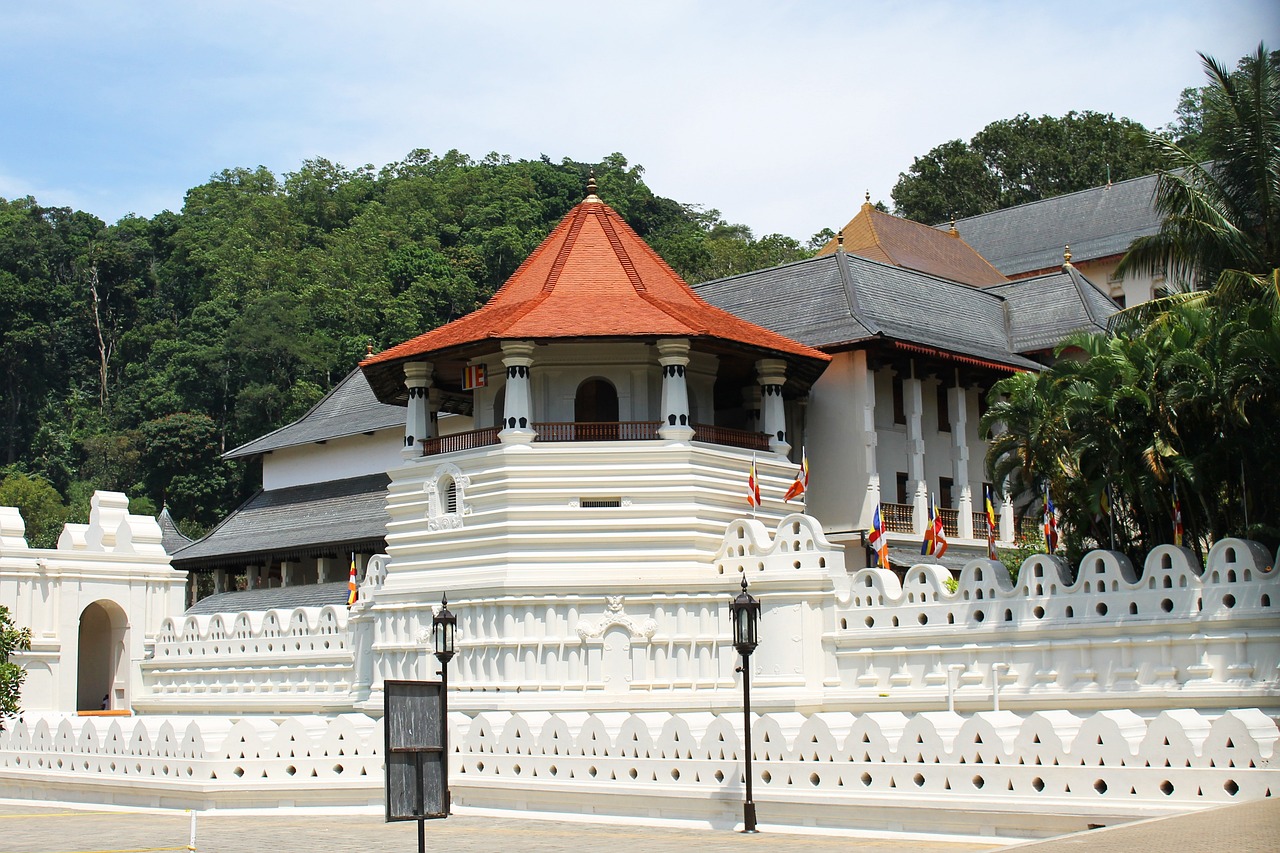Sigiriya, often referred to as the “Eighth Wonder of the World,” stands as one of the most remarkable archaeological and historical sites in Sri Lanka and indeed across all of Asia. This ancient rock fortress, rising dramatically from the surrounding plains, represents an extraordinary blend of urban planning, architecture, landscaping, and artistry that continues to captivate visitors and scholars alike.
Sigiriya The Sky Fortress of Ancient Sri Lanka
Sigiriya (meaning “Lion Rock” in Sinhalese) dates back to the 5th century CE, specifically to the reign of King Kasyapa I (477-495 CE). According to the ancient Sri Lankan chronicle Culavamsa, Kasyapa seized the throne from his father, King Dhatusena, through a violent coup. After murdering his father, Kasyapa feared retribution from his half-brother and rightful heir, Moggallana, who had fled to India.
Seeking a secure and impregnable location from which to rule, Kasyapa chose the towering rock of Sigiriya and transformed it into a magnificent palace complex and city. The strategic location offered both defensive advantages and a dramatic setting befitting a king determined to establish his legitimacy and grandeur.
Following Kasyapa’s death in 495 CE, Moggallana reclaimed the throne and moved the capital back to Anuradhapura. Sigiriya was subsequently converted into a Buddhist monastery, which continued until the 13th-14th centuries before being abandoned.
Geographical Setting
Sigiriya is located in the Matale District of Sri Lanka’s Central Province, approximately 170 kilometers northeast of Colombo. The site features a massive column of rock nearly 200 meters (660 feet) high, which dominates the surrounding landscape of forested plains. The rock itself is a hardened magma plug from an extinct and long-eroded volcano.
The local topography was ingeniously incorporated into the design of the complex, creating a harmonious blend of natural and built environments. The site’s geography not only provided defensive advantages but also allowed for the creation of spectacular gardens, water features, and living spaces.
Architectural Layout and Features
Sigiriya represents one of the best-preserved examples of ancient urban planning. The complex is organized along an east-west axis and consists of several distinct zones:
The Gardens
Sigiriya features three interconnected garden types that form one of the oldest landscaped gardens in the world:
- Water Gardens: Located in the western part of the complex, these symmetrical gardens feature water pavilions, bathing pools, fountains, and meandering streams. The hydraulic engineering is particularly impressive, with underground water conduits that still function during the rainy season, creating functioning fountains after 1,500 years.
- Boulder Gardens: These less formal gardens incorporate existing rock formations into the landscape design, with winding pathways, rock-cut steps, and sheltered grottoes. Many of these natural shelters were used by Buddhist monks during the later monastic period.
- Terraced Gardens: Rising from the base toward the rock itself, these terraced gardens follow the natural contours of the hill and lead visitors toward the palace complex above.
The Mirror Wall
As visitors ascend the rock, they encounter a highly polished white plaster wall that once had such a reflective finish that the king could supposedly see his reflection as he walked alongside it. This wall is now famous for another reason: it contains over 1,500 pieces of graffiti dating from the 6th to the 14th centuries, providing valuable insights into the development of the Sinhalese language and literature.
The Frescoes
Halfway up the rock, a protected pocket in the western face houses remarkable frescoes depicting graceful female figures, often referred to as the “Heavenly Maidens” or “Cloud Damsels.” Originally, these paintings may have covered an area of 140 meters long and 40 meters high, though only a small fraction remains today. The surviving paintings showcase sophisticated artistry with naturalistic yet elegant forms, vibrant colors derived from mineral pigments, and a style that influenced Sri Lankan art for centuries.
The Lion Gate
At the northern end of the rock, visitors once entered the final ascent to the palace through a massive gateway built in the form of a lion. Today, only the enormous paws of this structure remain, flanking the staircase. This lion symbolism was significant, as Kasyapa adopted the title of “Sinhala,” meaning “lion,” to bolster his royal legitimacy.
The Summit
The summit of Sigiriya contains the ruins of the royal palace, complete with gardens, pools, and various buildings. The layout demonstrates sophisticated spatial planning, with different areas designated for public functions, private royal quarters, and service facilities. The palace was designed to maximize the dramatic setting while providing practical accommodations for royal life.
Engineering and Technical Achievements
Sigiriya stands as testimony to the advanced knowledge and technical skills of ancient Sri Lankan engineers and craftsmen:
Hydraulic Systems
The water management system at Sigiriya is one of its most impressive features. Engineers created a complex network of reservoirs, dams, channels, and pumps that transported water from ground level to the summit. The symmetrical water gardens feature hydraulically precise fountains that still work during rainy seasons—a remarkable achievement of ancient hydraulic engineering.
Construction Techniques
Building a palace complex atop a 200-meter rock face required innovative construction techniques. Evidence suggests the use of advanced scaffolding systems, pulley mechanisms, and skilled stone masonry. The brick and stonework throughout the site exhibit precision that would be challenging even with modern tools.
Urban Planning
The overall layout of Sigiriya demonstrates sophisticated urban planning principles, with clear demarcations between different functional zones, efficient circulation patterns, and harmonious integration with the natural landscape. This level of planning indicates a highly organized society with specialized knowledge in multiple disciplines.
Cultural and Artistic Significance
Beyond its architectural marvels, Sigiriya represents a cultural flowering that produced remarkable artistic achievements:
The Frescoes
The surviving paintings at Sigiriya are among the most important examples of ancient Sri Lankan art. The female figures, depicted amidst clouds and flowers, show a mastery of line, form, and color. Art historians continue to debate their meaning—whether they represent apsaras (celestial nymphs), representations of lightning and clouds, or portraits of Kasyapa’s wives and concubines.
The Poetry
The graffiti on the mirror wall includes poetic verses composed by visitors to Sigiriya between the 6th and 14th centuries. These inscriptions, written in early Sinhalese, contain poetic reflections on the beauty of the frescoes and the site itself. They represent some of the earliest examples of Sinhalese poetry and provide valuable insights into the development of the language and literature.
Synthesis of Influences
Sigiriya shows evidence of cultural and artistic exchange across South and Southeast Asia. Elements of the architecture and art reflect influences from India, particularly from the Ajanta Caves, while also remaining distinctly Sri Lankan in character. This synthesis of influences speaks to Sri Lanka’s position within ancient trade networks.
Archaeological History
The rediscovery and excavation of Sigiriya constitute an important chapter in the site’s history:
Rediscovery
While local awareness of Sigiriya never completely faded, the site was largely forgotten by the wider world until the 19th century. In 1831, British Major Jonathan Forbes of the 78th Highlanders discovered the “bush-covered summit” during a horseback trip. Archaeological interest grew gradually afterward.
Major Excavations
Systematic archaeological work began in 1895 under the leadership of H.C.P. Bell, the first Commissioner of Archaeology in Ceylon (Sri Lanka). The most extensive excavations occurred between 1950 and 1954, led by archaeologist Senarath Paranavitana, who also deciphered and published the mirror wall inscriptions.
Modern Research
Contemporary archaeological research at Sigiriya employs advanced technologies such as ground-penetrating radar, digital mapping, and materials analysis to better understand construction techniques, chronology, and the site’s relationship to other settlements in ancient Sri Lanka.
UNESCO Recognition and Tourism
Sigiriya was designated a UNESCO World Heritage Site in 1982 as part of the “Ancient City of Sigiriya.” The UNESCO citation recognizes it as “a unique witness to the civilization of Ceylon during the years of Kassapa I.”
Today, Sigiriya ranks among Sri Lanka’s most visited tourist attractions, drawing hundreds of thousands of visitors annually. Tourism has become vital for the local economy but also presents challenges for conservation, as increased foot traffic and environmental factors threaten the site’s preservation.
Conservation Challenges
Several factors pose threats to the long-term preservation of Sigiriya:
Environmental Factors
Exposure to monsoon rains, wind erosion, temperature fluctuations, and biological growth all contribute to the deterioration of stone structures, frescoes, and other features. Climate change may intensify these threats in coming decades.
Tourism Pressure
The increasing number of visitors places physical strain on the ancient structures and creates challenges for site management. Balancing access with conservation remains an ongoing concern.
Resource Limitations
Despite its significance, funding constraints have sometimes limited conservation efforts at Sigiriya. Effective preservation requires consistent monitoring, research, and intervention.
Ongoing Research and Discoveries
Archaeological work continues at Sigiriya, with researchers employing new technologies to uncover previously unknown aspects of the site:
Extended Urban Layout
Recent surveys have revealed that Sigiriya’s urban planning extended far beyond the central rock, with evidence of elaborate outer suburbs and hydraulic infrastructure spanning several square kilometers.
Construction Techniques
Ongoing studies of construction materials and methods provide insights into the sophisticated engineering knowledge of 5th-century Sri Lanka, challenging assumptions about technological development in ancient South Asia.
Historical Context
Collaborative research involving historians, archaeologists, and epigraphers continues to refine our understanding of Sigiriya’s place within the broader political and cultural landscape of ancient Sri Lanka.
Cultural Legacy
Sigiriya occupies an important place in Sri Lankan cultural identity and continues to inspire creative works:
Literary Inspirations
The dramatic story of King Kasyapa and the magnificent setting of Sigiriya have inspired numerous literary works, including novels, poems, and plays in Sinhala, Tamil, and English.
Artistic Influence
The distinctive style and subjects of the Sigiriya frescoes continue to influence contemporary Sri Lankan artists, with many modern works referencing or reinterpreting the famous “Sigiriya maidens.”
Symbol of National Heritage
Sigiriya features prominently in Sri Lanka’s promotion of its cultural heritage, appearing in educational materials, tourism campaigns, and even on currency notes, reinforcing its status as a symbol of national pride and identity.
Conclusion
Sigiriya stands as a testament to the extraordinary achievement of ancient Sri Lankan civilization. Its impressive architecture, ingenious engineering, beautiful artworks, and harmonious integration with the natural landscape demonstrate a sophisticated culture capable of creating works of enduring beauty and significance. Despite the passage of fifteen centuries, Sigiriya continues to inspire wonder and admiration, inviting visitors and scholars alike to contemplate the remarkable vision and skill of those who created this magnificent “palace in the sky.” As ongoing research reveals more about this extraordinary site, our appreciation for its cultural and historical importance only continues to grow.
Submit your review | |


